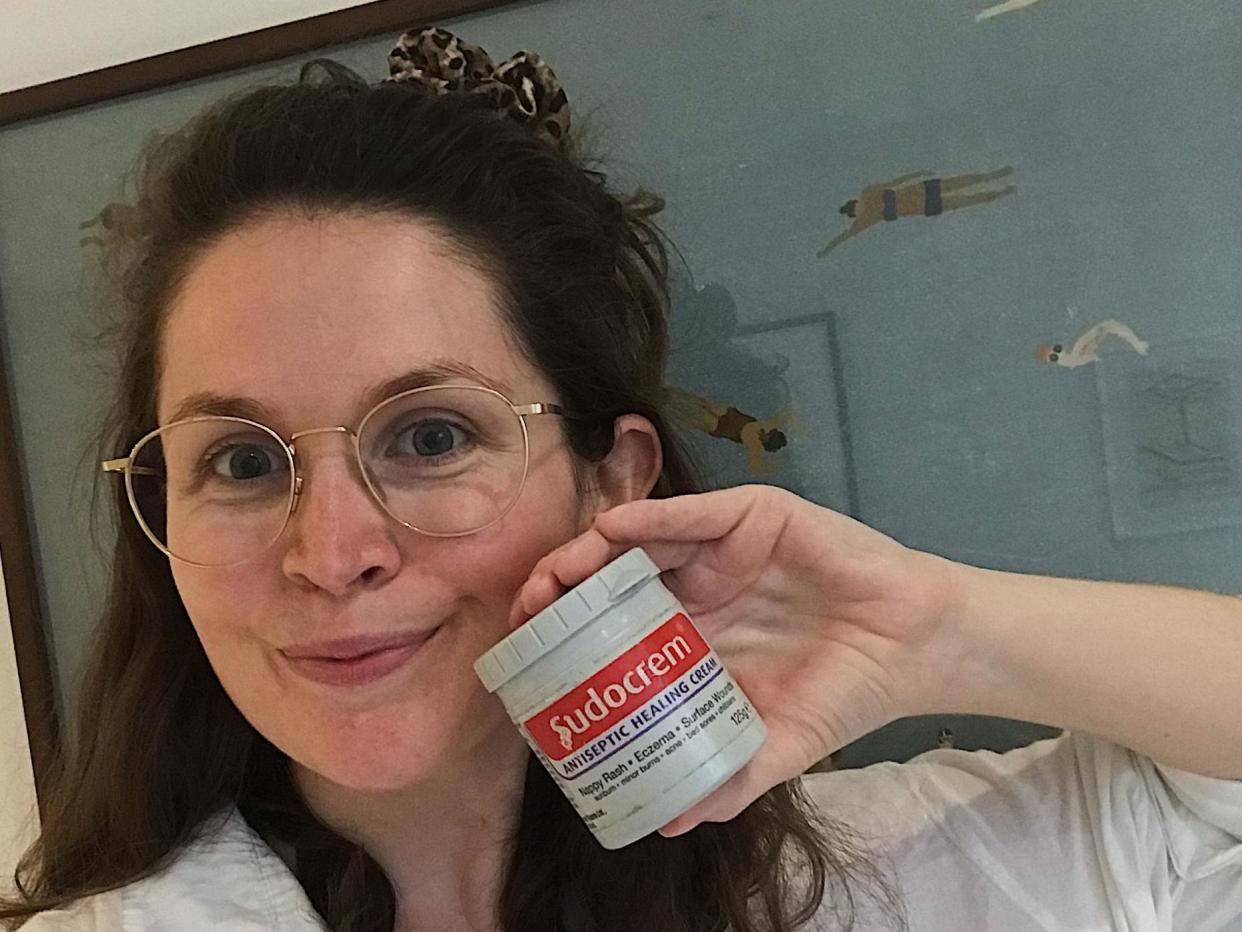Why Sudocrem is my skincare secret: An ode to the little grey tub

There is nothing more humbling than the first time you break out your full skincare regime in front of a new partner. I’m not talking delicate beautifully-scented lotions and potions -- or at least that wasn’t how I approached it. An awkward silence descended as I returned from the bathroom, followed by a tentative: “What is that all over your face?”.
I’d opted for a look akin to something you might expect from someone suffering from a full face of chicken pox. Reader, it was Sudocrem.
Sudocrem is the product that has been in my cupboard the longest of all my beauty products – not one of those things I remember buying for the first time, it’s always just been there lingering on the sidelines. I started using it as part of a teenage experiment to tackle skin problems that I didn’t know how to help and was too lazy to invest too much energy in finding out about.
But while the Maybelline-matte-mousse and maybe-toothpaste-will-stop-these-spots days are long gone, the old-school Sudocrem has outlived them all.
If you know anything about skin you might have heard that the grey tub is a sub-par way of treating skin -- skincare guru Caroline Hirons, says about using it to treat spots: “If acne could be fixed by Oral-B or Sudocrem all of our problems would be solved. Dude. Stop putting toothpaste and bum cream on your face”. Likewise, dermatologist Natalia Spierings told Women’s Health: “I’m afraid Sudocrem can’t help [spots].”
And yet, I’m not the only one who keeps going back for more.
On Reddit there are endless forums with people asking: “Is Sudocrem really that bad?” and people testifying that it has been a “holy grail product” or a “life saver” for them. Of course there are also people saying they found it unhelpful, or in some cases that it clogged their skin, but for lots of people like me, it does seem to work.
In 1931 Thomas Smith, a professor of pharmacy and retail pharmacist in Dublin developed Sudocrem in the back of his shop. He wanted it to treat a number of ailments for his customers and created a formula as capable of tackling nappy rash as it was eczema, pressure sores, incontinence rash, cuts and grazes and (the ominously worded) generic skin lesions.
The spuds and bacon of skincare creams...
Smith’s wonder product soon proved incredibly popular and he had to upscale to bigger premises. Two decades later, a promotional strategy of personally delivering Sudocrem samples to new mothers turns the product into the steady seller it still is in Ireland today: a 2012 Irish Independent article described Sudocrem as “the spuds and bacon of skincare creams, the Guinness of gentle nappy rash reliefs and the Tayto of topical ointments”.
The word Sudocrem is supposedly even evolved from an Irish pronunciation of “soothing cream”.
One can understand why an all-purpose product (the website literally says it has a water-repellent base to help “stop any irritants such as urine and faeces”) would be such a hit in the mid-20th century, but what about now when we have thousands of beauty products at our disposal? Why am I still plastering this pre-Second World War cream all over my face?
The way I use sudocrem is as a topical night-time treatment for when my skin is particularly sensitive or covered in hormonal spots, doing their little red thing. Granted this is not a one-product miracle – it is layered on top of 10 other cleansers, toners, acids, and oils. Then, just as a final touch I add a dab of the cream directly on to the spot and leave it on overnight.
What I like about it is not only does it dry out the area and seem to help it heal quicker than alternatives (other spot-reduction type solutions often have acids or stuff that seems so harsh on what is a raw area) but it also has the simple function of totally covering the offending area.
This means you A) cannot continue to hack away at it in the mirror B) be horrified at your own reflection. Plus there’s something comforting about the smell, like a baby after a bath.
Perhaps if my skincare needs were slightly more complex -- at 29 the pimples are thankfully fleeting rather than constant and can normally be fixed by eating slightly better, avoiding milk and keeping my hands away from my face (useful for breakouts and avoiding coronavirus, it seems) -- I would avoid it and use a product more widely endorsed by dermatologists.
But in a world where the beauty marketplace is saturated, Sudocrem is always something I find myself coming back to. I know that -- despite what the experts say -- it helps reduce redness for me and always leaves the situation looking a little better 12 hours later.
Not to mention the tubs are so big and the amount applied so small, that they last for ages. And even when you do need to invest they are affordable unlike many others on the shelves (£2.99 for 125g).
Just like Vaseline or Vicks VapoRub, Sudocrem is a product I’ll probably always come back to for security. They aren’t the most glamorous, but they do the job. For now Sudocrem is my guilty skincare secret (or not so secret as the white marks all over my pillow can attest).
You can buy Sudocrem at Boots
Our product reviews are unbiased, independent advice you can trust. On some occasions, we earn revenue if you click the links and buy the products, but we never allow this to bias our coverage. The reviews are compiled through a mix of expert opinion and real-world testing.


